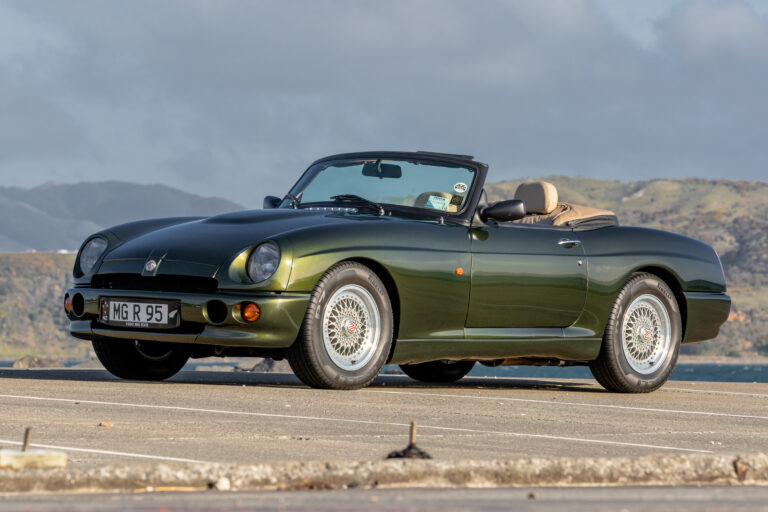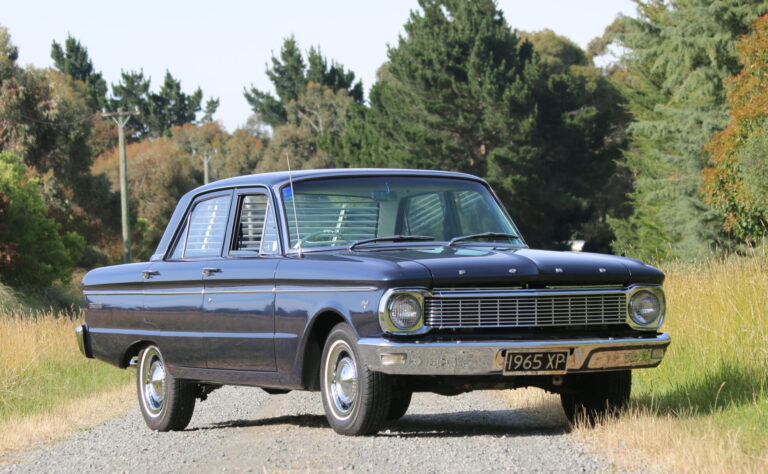When Ferrari decided to build a special-edition car and name it after ‘il Commendatore’ — Ferrari’s famously irascible boss — it put the acid on itself to produce something very special indeed
By Ian Parkes


Besides routinely building some of the world’s most desirable cars on its production lines, and some of the world’s most successful cars in the crucible of motorsport, Formula 1, Ferrari occasionally sets out to build something a bit special — a limited-edition model that makes a statement to the motoring world.
There are currently five of these models, the 288 GTO (presented 1984), F40 (1987), F50 (1995), Enzo (2002–2004), and LaFerrari (2013). The one they decided to name after company founder Enzo Ferrari had better be good.
Many of these landmark cars have made the most of the prancing horse’s extensive F1 experience. This car makes the connection explicit, offering an example tantalisingly close to a full-throated F1 car. It even goes beyond, offering technology that wasn’t allowed in F1, such as active aerodynamics and traction control. As a result, Ferrari produced what is now by consensus seen as the world’s first hypercar.
Ferrari introduced automated shift manual controls to Formula 1 in 1989 on the 640, so the Enzo naturally had to have this F1-style automated shift manual transmission. It wasn’t the first, though, as clutchless — or rather cars with automatic clutches — have popped up from time to time, dating back to the 1955 Citroen DS. F1-style LEDs on the flat-topped steering wheel indicate when to change the sequential box, and hitting the paddle shifters actuates an electro-hydraulic clutch and shifting mechanism that bangs through the change in 150 milliseconds. That’s one of the few criticisms of the car’s driving experience, with some even describing the changes as clunky. Perhaps that’s not what you’d expect when you are forking out millions for the privilege — most cars can manage a smooth gear change — but this is art; it’s a genuine Formula 1 artefact and if an Enzo Ferrari felt the same as an ordinary car, that would be very disappointing. It was cutting edge for its day, but such is the speed of progress that modern dual-clutch boxes can do the same job now, and more smoothly, in just over 20 milliseconds.
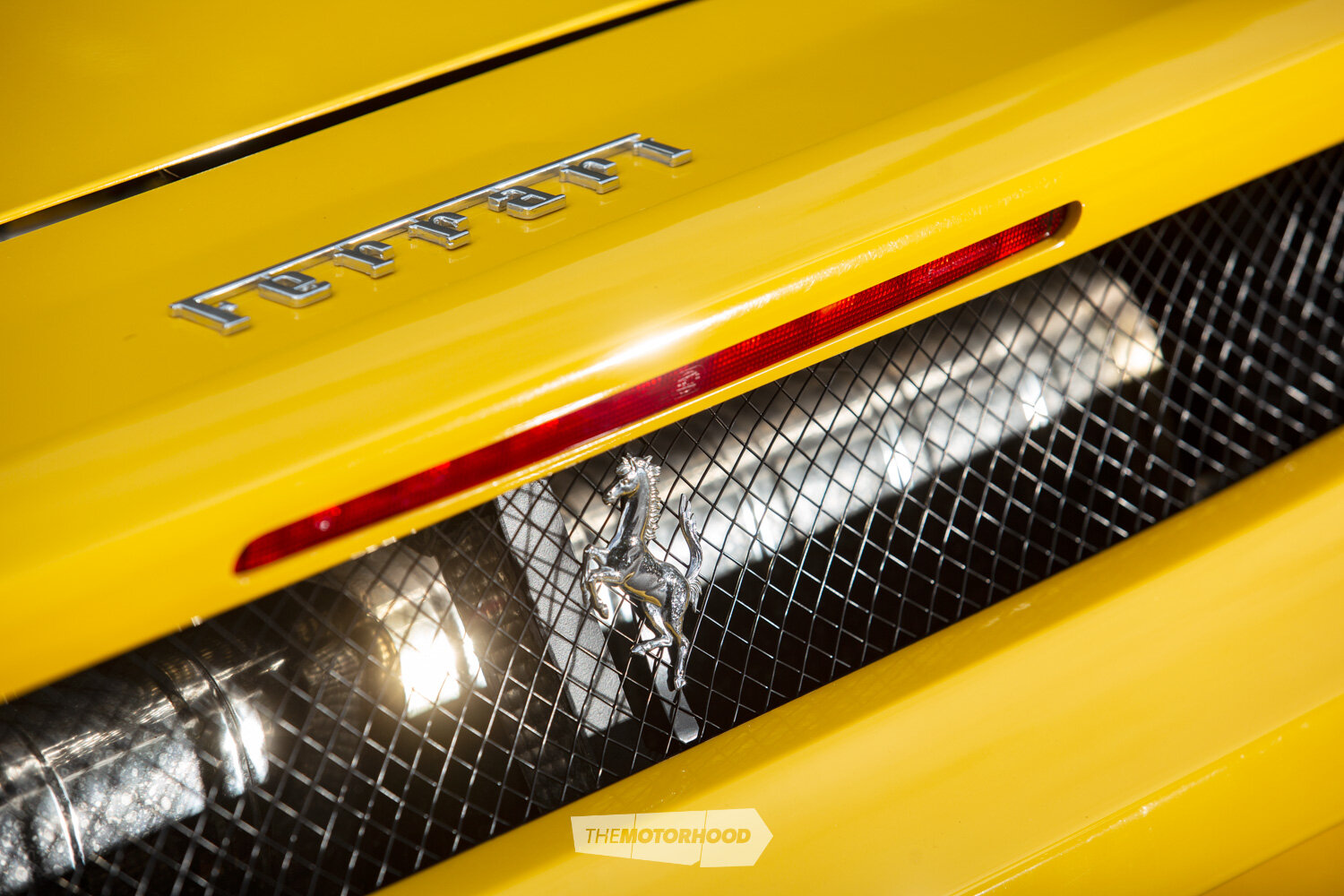
Ferrari’s forte
The engine — a V12, of course — was brand new for this car. It is longitudinally mounted, driving the rear wheels only. It was developed from the V8 in the Maserati Quattroporte, sharing its 104mm bores and 65-degree V. Fuel injection feeds 5998cc in 12 pots, each with four valves per cylinder with continuously variable timing operated by double overhead cams. What’s more, the intake manifold has torque-boosting telescoping pipes — more F1 technology. The bores are Nikasil-lined and the con rods are titanium. It’s an intoxicating blend of conventional and exotic engine tech. It’s worth noting at this point that Enzo himself was dismissive of aerodynamic tech, saying “aerodynamics are for people who can’t build engines”. Just as that view is now obviously a period piece, this car represents another motoring inflection point. It’s likely to be the last naturally aspirated, non-hybrid V12 hypercar we are likely to see. Its successor in the signature car series, LaFerrari, features hybrid power.
As you’d expect, the Enzo offers blistering performance on tyres specially designed for the car. It can apparently hit 100kph in 3.6 seconds and 160kph in 6.5 seconds. Like its LaFerrari successor, the Enzo was immediately met by competition, this time from the Porsche Carrera GT and the Mercedes McLaren SLR. Despite the Ferrari’s spadefuls of F1 tech, the Porsche — whisper it — just edged the Ferrari in fastest laps of a couple of circuits, according to contemporary reports. But in some ways that competition only adds to the car’s appeal.
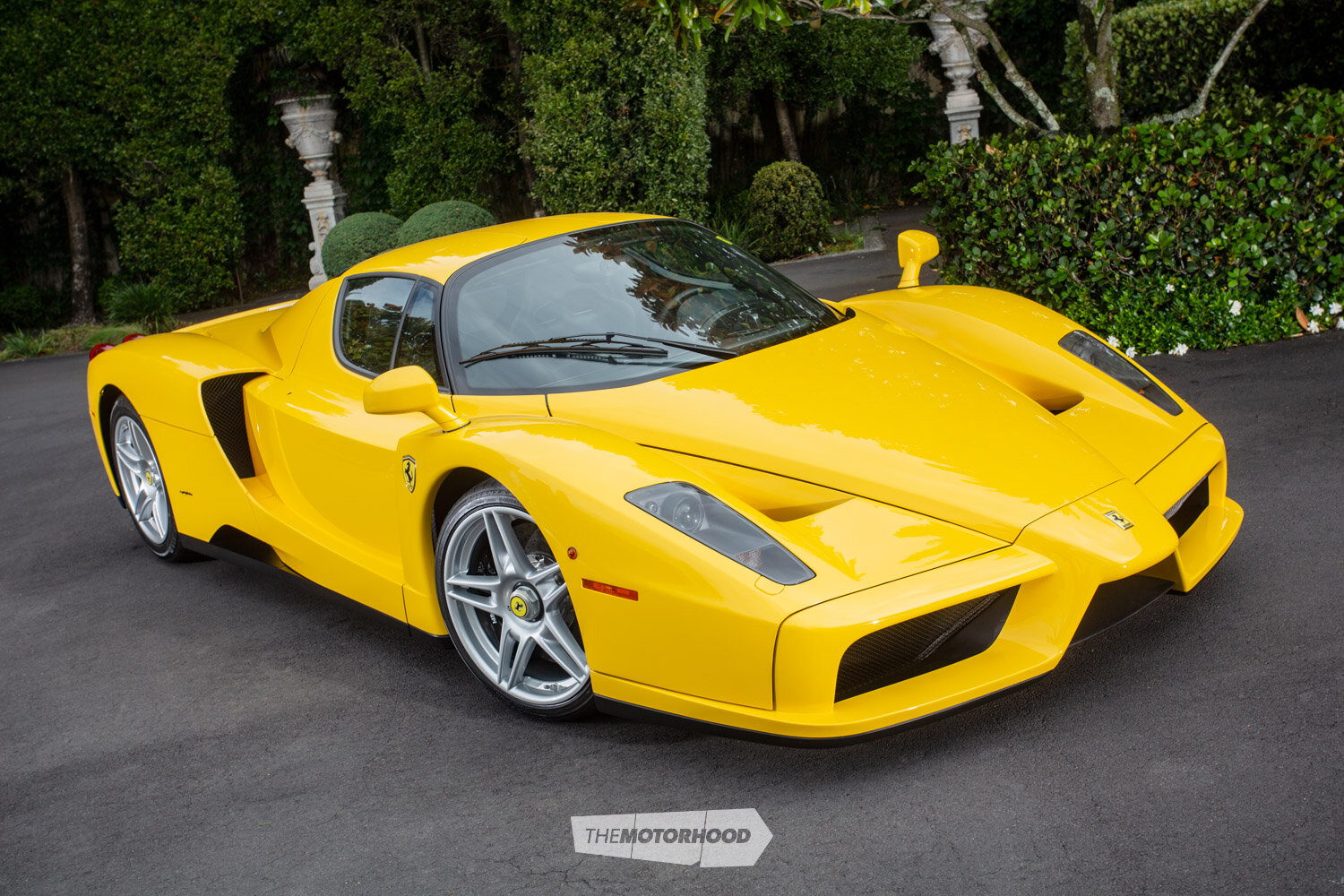

Carbon galore
The Enzo has a carbon-fibre body of course, and in keeping with its F1 inspiration, interior trim is spartan, the carbon-fibre weave offering only an impression of soft fabrics. The seat doesn’t even move — but, of course, you can choose the width and position and then it is fixed in place. The Enzo was also the first road car to feature carbon-fibre disc brakes, offering braking commensurate with its hypercar performance. Magazine testers at its launch predictably reported braking way too soon on the first few corners of their laps around the Fiorano test circuit.
You will note too that this car does without the aerodynamic rear wings adorning both its F40 and F50 predecessors. Ferrari naturally wanted to create a special-looking car and it could avoid the styling compromise forced by having to stick on a wing — and pay respect to the late boss’s distaste for such appurtenances — by using active dynamics. It works very well. A car that has apparently been recorded hitting 355kph definitely needs plenty of downforce. The Enzo’s front underbody flaps, a rear diffuser, and a small adjustable rear spoiler supposedly generate 3363 newtons of downforce at 200kph and over 7600 newtons at nearly 300kph, but this decreases as speeds go up from there.
The body was designed by Pininfarina’s head of design, Ken Okuyama. It was controversial at the time, attracting criticism for excessive angles and curves. It is certainly more flamboyant than the Maserati MC12, a derivative of the Enzo that Ferrari produced for the FIA GT championship — Ferrari controlled the other sports car brand for Fiat at the time. Very much on the plus side is that the car’s styling hasn’t dated. This 20-year old car looks as fresh and interesting today as it did at launch and those bold lines clearly evoke the Formula 1 cars it was based on. After all, it’s meant to be a statement piece, not your ‘average’ Ferrari. The more you look at it, the better it looks. I’d say job done.
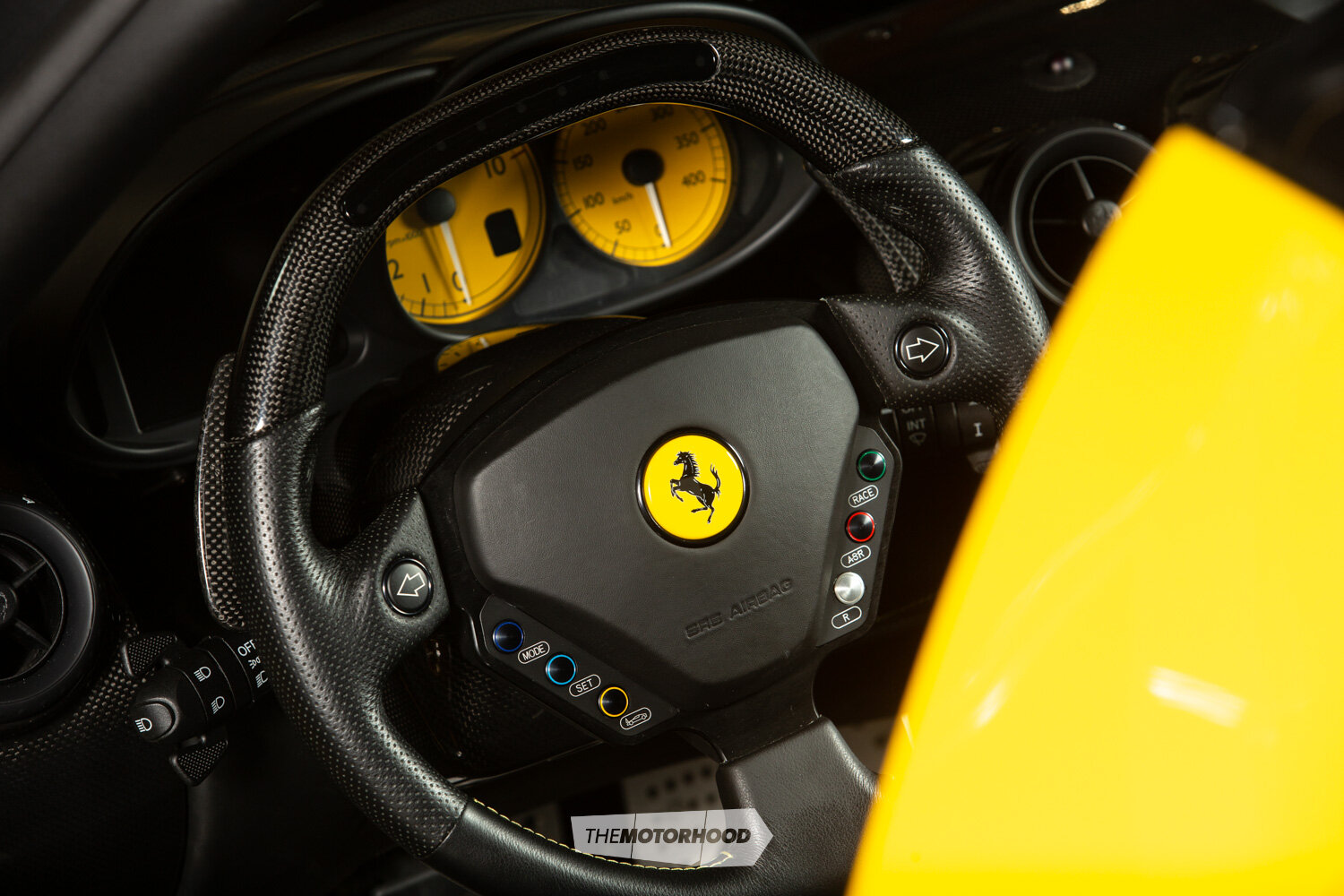
Top shelf
So just how special is this car, among Ferrari’s special cars? It was announced at the 2002 Paris Motor Show and, as is the way of these things, invitations to purchase were offered to customers who had bought F40s and F50s. Appropriately, it’s an invitation that is very hard to refuse. All 399 cars were sold before production began the following year.
Scarcity is a given among special editions in this rarified company so, when it comes to current values, the numbers become especially important. This model falls into the middle of the range among Ferrari’s signature specials. The factory-built 272 288 GTOs, which were based on the much more modest 308 body, are the oldest and slowest of the limited-edition cars. They are also the rawest and rarest so their values are already high. Ferrari built 1341 F40s, 349 F50s, and 499 of the (hybrid) LaFerraris. The Enzo went on sale for US$659,000 or around $924,000 of our dollars. These cars now go for $2.8 million to more than $4 million, meaning if you had hung onto one from new you’d be up around $1.5 million.
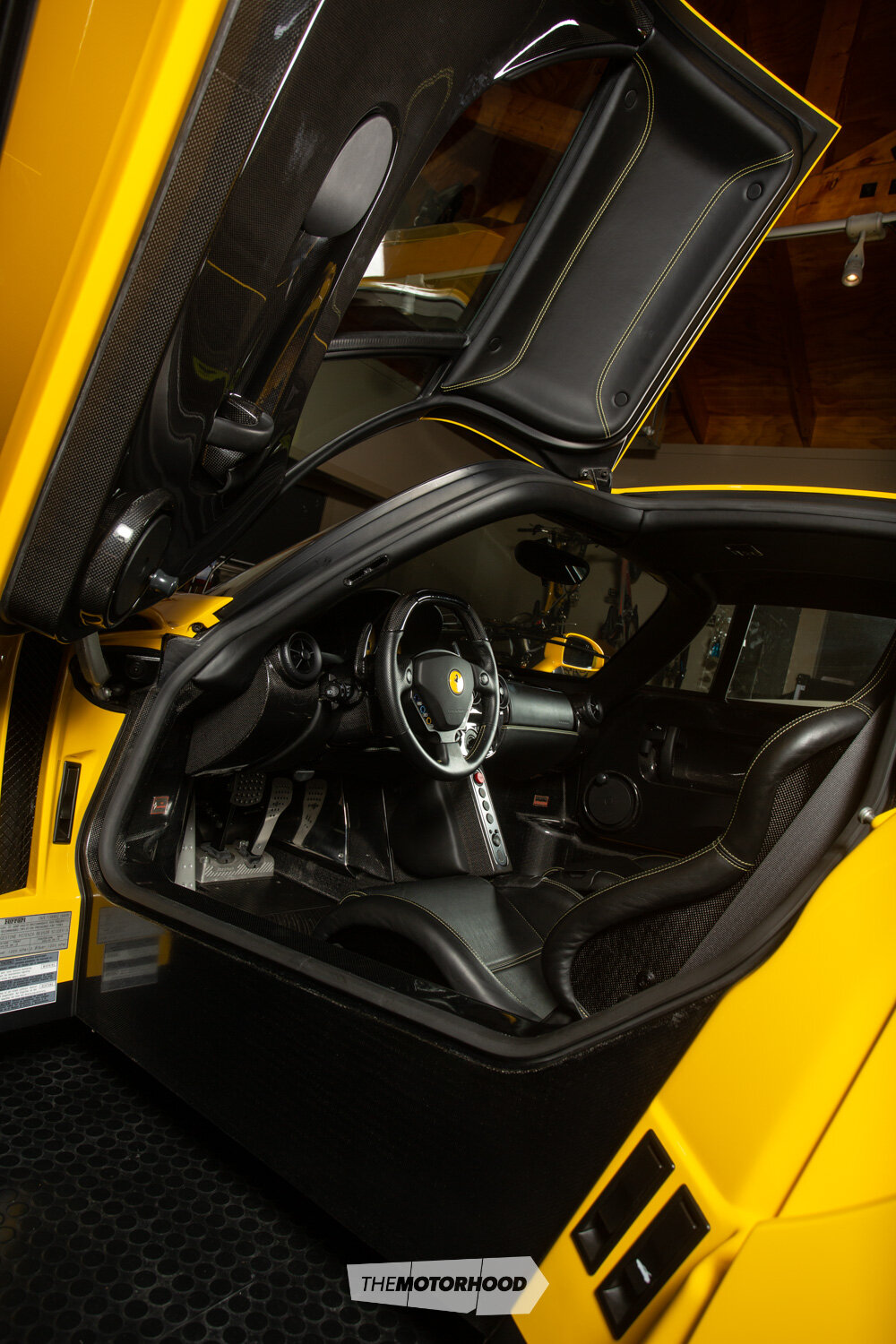
Invitation only
It’s an interesting dynamic, the way the Ferrari market operates. It seems the days of Ferraris of any type decreasing in value are long gone. In the ’50s, towards the end of the coach-building era, when numbers were always small, 1950s Testarossas were quickly rendered obsolete by the rapid advances of the era. In the ’60s, you could pick one up for under $8000. One sold in 2014 for around $56 million. It must grate a bit for the factory to produce cars, even at healthy prices, knowing their buyers will surely cash in with little effort when they sell them. However, it does mean the factory is guaranteed to sell the entire production run and never suffer the ignominy of finding one of its cars appearing to be unpopular.
Grant Baker, who owns this car, is one of a few Kiwis fortunate enough to be on that invitation list. He says Ferrari doesn’t start building these limited-edition cars until they are all sold, and deposits have been lodged.
Grant is in Ferrari’s good books. That means he can add a few bespoke touches to his purchases. Grant liked the fact that the prancing horse emblem was hand-painted on the wings of earlier cars, as befitting their hand-built heritage. Later models have a badge inset into the wings. Grant said to the factory he’d prefer the hand-painted version.
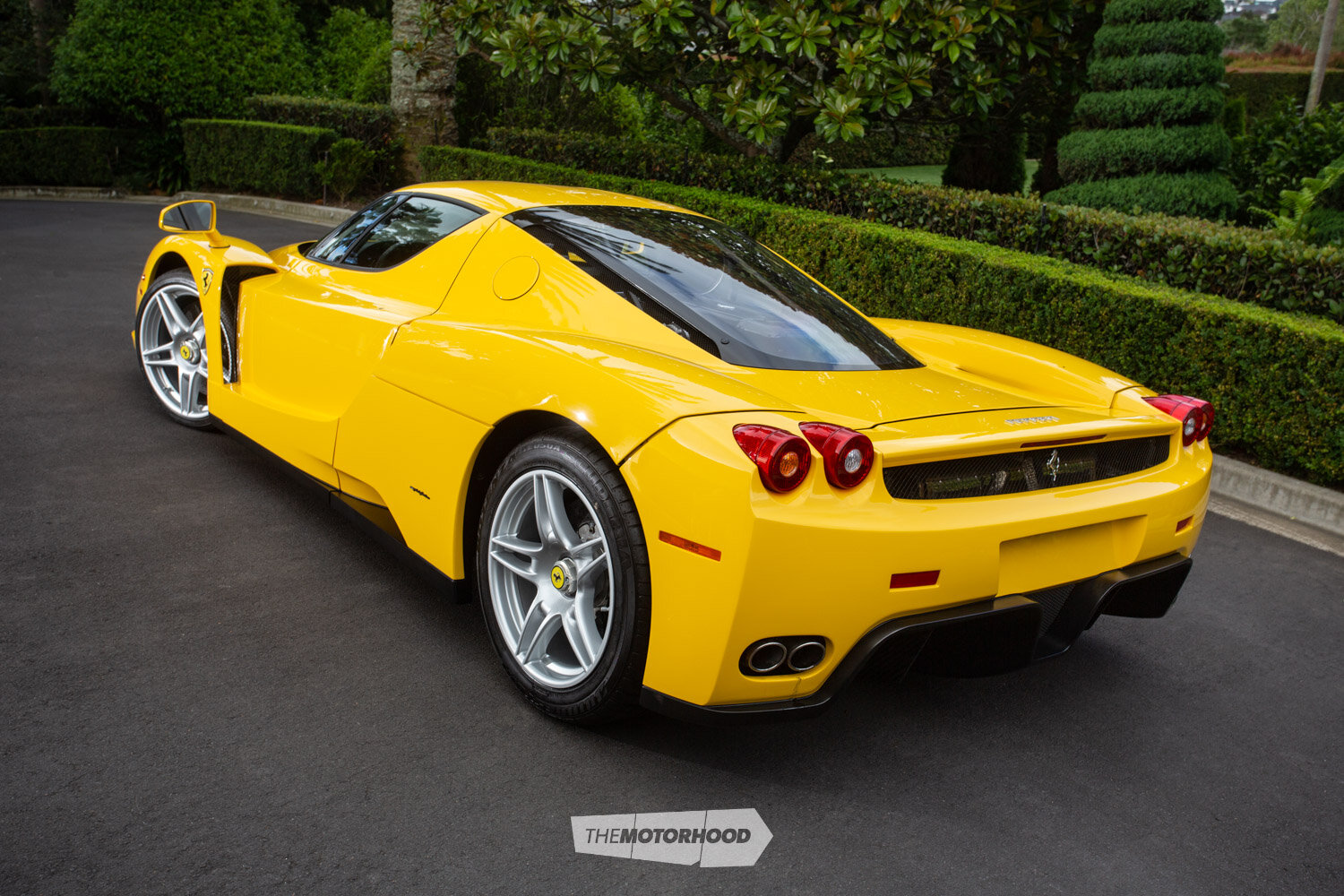
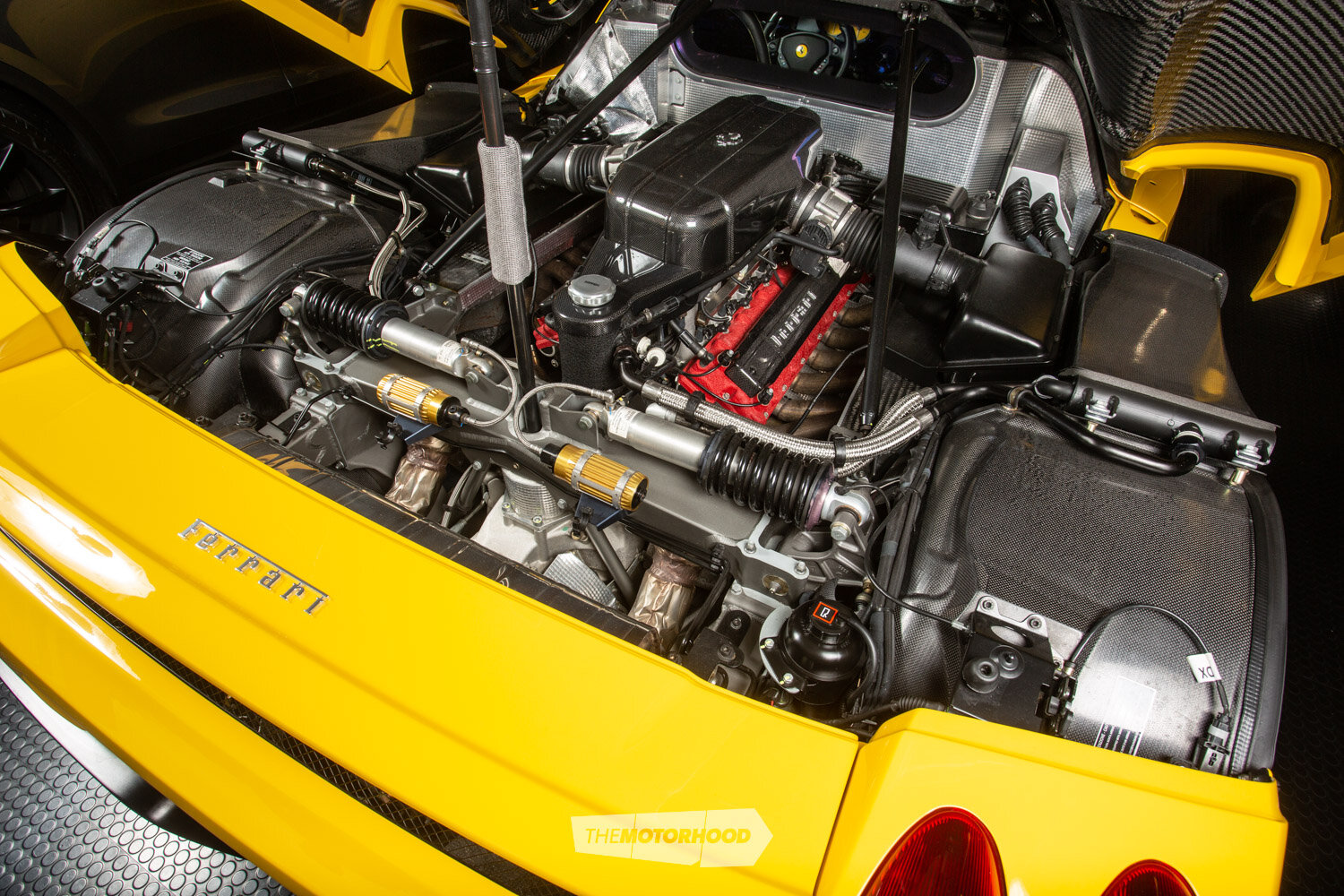
Doing the impossible
“You sometimes hear the word ‘impossible!’,” from the factory says Grant, “but if you keep talking you find they are quite good at doing the impossible. Maybe it means something else in Italian.”
The factory said the indentation pressed in the wings for the badge made a painted symbol ‘impossible’ to achieve. Grant was told they would have to make new wings. “So?” said Grant. He got his hand-painted horse and has applied it to a couple of recent additions.
Grant has several iconic Ferraris among the rather overwhelming collection in his garage, including an open-top black LaFerrari Aperta. While he has a few older cars, he is likely to stay with the newer cars now. He races a Ferrari 488 Challenge so is very well attuned to the upper echelon of modern Ferrari performance and driving dynamics.
Grant isn’t one of those people who believes Ferraris have to be red, and, as Ferrari offers the opportunity to have bespoke colours, that adds to the interest. The striking bold yellow of this car didn’t put him off when he bought it second-hand. Even though it’s true, that description — second-hand — is an insult to this car. It is as brand new as you can get with a 20-year-old car. It is not registered for the road, and never has been. In fact, Grant can’t imagine there’s a better one out there.
The grand tour
It is Grant’s second Enzo. He had another one that he and a friend used to tour Europe in 2013. Fully echoing the spirit of the iconoclastic ‘Ingegnere’ — another of Enzo’s many nicknames — it’s an unusual choice as a Gran Turismo car, lacking luggage space, well, much space of any kind, or the comforts of almost any modern car. However, this Ferrari fanatic got to drive this superb car on some of the best roads in Europe and, on suitable occasions such as on Ferrari’s Mugello racetrack, at speeds close to those at the upper end of the car’s performance envelope. Remember, Grant races cars like this. Bumbling about in a campervan would have been such a waste. Of course it also meant he could take part in that year’s Ferrari Cavalcade in Florence. His Enzo was one of six red Enzos at that event.

In reality, driving the Enzo was no hardship,” says Grant. “It’s so comfortable. It’s true you can’t take much stuff with you but it drives beautifully, especially on the autostradas and autobahns they have there. It’s so fast and so composed.”
Grant says he bought that car in the UK with around 6000km on the clock, and took it up to 12,000 in the three years he had it, so he got plenty out of it. A 2004 model with 2000km on the clock sold recently for $3.64 million. Grant puts current values at around $3.8 to $5 million and says it is unlikely that any Enzos sold now will do many more hard miles.
Grant has a few other Ferraris in his garage in Auckland, but he spotted this Enzo for sale while he was in the UK with a friend for Goodwood in 2018. He was intrigued because of this car’s pristine condition, for all it means to the marque, and because of his personal connection. “I realised I missed it.”
The car was offered by a dealer who had bought a collection of cars from a Danish businessman, so he went to see it. The previous owner hadn’t fancied paying the 300-per-cent new-car taxes that applied there so he had kept it in a bond store, knowing full well it was hardly a waste of money. Its special treatment continues to this day. Given that a long sea voyage would not have been kind to it, it was flown to New Zealand in the hold of an A380 aircraft. Having driven thousands of kilometres in his previous Enzo, Grant is able to resist the temptation to add to the 289km on the clock of this one. For the short journey of 12–15km to our photo location, the car was transported by truck. When it comes to Ferraris, Grant has shown the impossible is possible. You can have your cake and eat it.
This article originally appeared in New Zealand Classic Car issue No. 362

